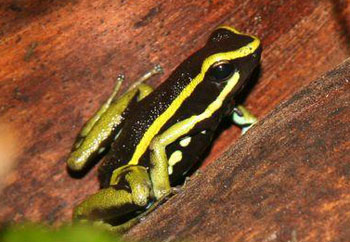Protected areas must be adapted to survive global warming
Protected areas must be adapted to survive global warming
Rhett A. Butler, mongabay.com
April 3, 2007
Protected areas can play an important role in reducing biodiversity loss due to global warming, reports a new study published March 30 in the journal Frontiers in Environment and Ecology (FREE). The research says that conservation efforts must factor in shifts in species’ ranges to be successful.
“Extinctions due to climate change are not inevitable — this research shows that new protected areas can greatly reduce the risk faced by species that help sustain us,” said Lee Hannah, a Conservation International (CI) climate scientist and the study’s lead author. “Areas set aside for nature are an important tool to combat climate change extinctions, and one that is well-tested and can be deployed immediately.”
Applying species distribution modeling and conservation planning tools in Mexico, the Cape Floristic Region of South Africa, and Western Europe, the international team of researchers forecast “the need for additional protected areas in light of anticipated species range shifts caused by climate change.” They found that existing protected areas will cover the ranges of many species as climate changes, but that additional area will be required to cover the ranges of most species.
 Photo by Rhett Butler |
“Our findings indicate that protected areas can be an important conservation strategy in such a scenario, and that early action may be both more effective and less costly than inaction or delayed action,” they write. “According to our projections, costs may vary among regions and none of the three areas studied will fully meet all conservation targets, even under a moderate climate change scenario. This suggests that limiting climate change is an essential complement to adding protected areas for conservation of biodiversity.”
“Conserving biodiversity as climate changes is a two-pronged challenge, requiring both adaptation — improved conservation strategies — and mitigation — stabilization of greenhouse gases in the atmosphere,” they continue.
The researchers said that since conservation efforts will become increasingly difficult the more climate changes, limiting climate change should be a top priority.
“Protected area additions will eventually be overwhelmed unless they are coupled with limitation of atmospheric greenhouse gases,” they wrote. “By the 2050s, many species in some regions may be unable to meet even the modest representation target used in this study, indicating that greenhouse gas levels in the atmosphere of as little as double pre-industrial CO2 might already exceed the capacity of improved conservation systems to maintain biodiversity.”
“Stopping climate change and dealing with the impacts that are now inevitable must go hand-in-hand,” Hannah added. “No conservation strategy can cope with the levels of change that will be experienced if we continue at the current pace of climate change.”
CITATION: Lee Hannah, Guy Midgley, Sandy Andelman, Miguel Araújo, Greg Hughes, Enrique Martinez-Meyer, Richard Pearson, and Paul Williams (2007) Protected area needs in a changing climate. Front Ecol Environ 2007; 5(3): 131—138
More on the impact of climate change on biodiversity
Extinction, like climate change, is complicated
(03/27/2007) Extinction is a hotly debated, but poorly understood topic in science. The same goes for climate change. When scientists try to forecast the impact of global change on future biodiversity levels, the results are contentious, to say the least. While some argue that species have managed to survive worse climate change in the past and that current threats to biodiversity are overstated, many biologists say the impacts of climate change and resulting shifts in rainfall, temperature, sea levels, ecosystem composition, and food availability will have significant effects on global species richness.
Climate change will cause biomes to shift and disappear
(3/21/2007) Many of the world’s local climates could be radically changed if global warming trends continue, reports a new study published in the early online edition of the journal Proceedings of the National Academy of Sciences. The authors warn that current climates may shift and disappear, increasing the risk of biodiversity extinction and other ecological changes.
Biodiversity extinction crisis looms says renowned biologist
(3/12/2007) While there is considerable debate over the scale at which biodiversity extinction is occurring, there is little doubt we are presently in an age where species loss is well above the established biological norm. Extinction has certainly occurred in the past, and in fact, it is the fate of all species, but today the rate appears to be at least 100 times the background rate of one species per million per year and may be headed towards a magnitude thousands of times greater. Few people know more about extinction than Dr. Peter Raven, director of the Missouri Botanical Garden. He is the author of hundreds of scientific papers and books, and has an encyclopedic list of achievements and accolades from a lifetime of biological research. These make him one of the world’s preeminent biodiversity experts. He is also extremely worried about the present biodiversity crisis, one that has been termed the sixth great extinction.
This article uses quotes and information from a Conservation International (CI) news release and the FREE paper.